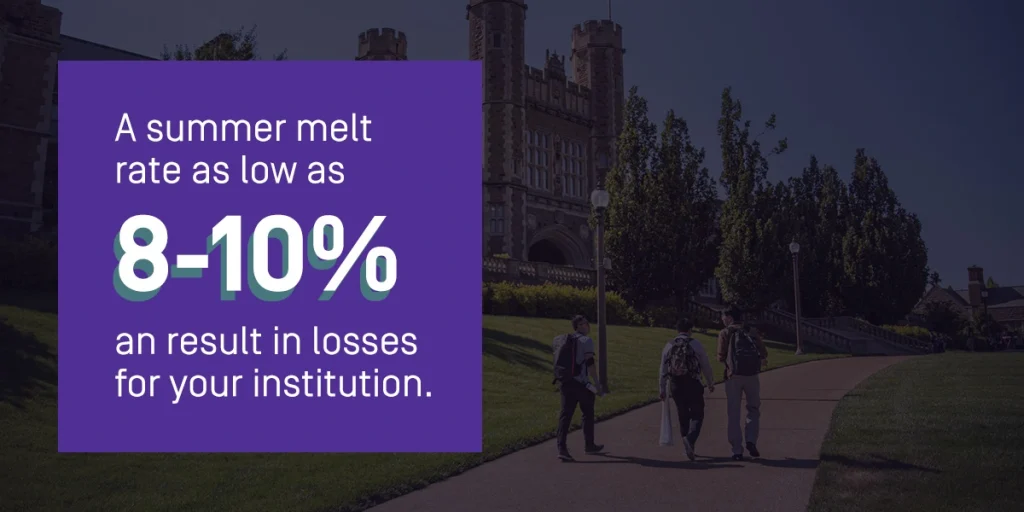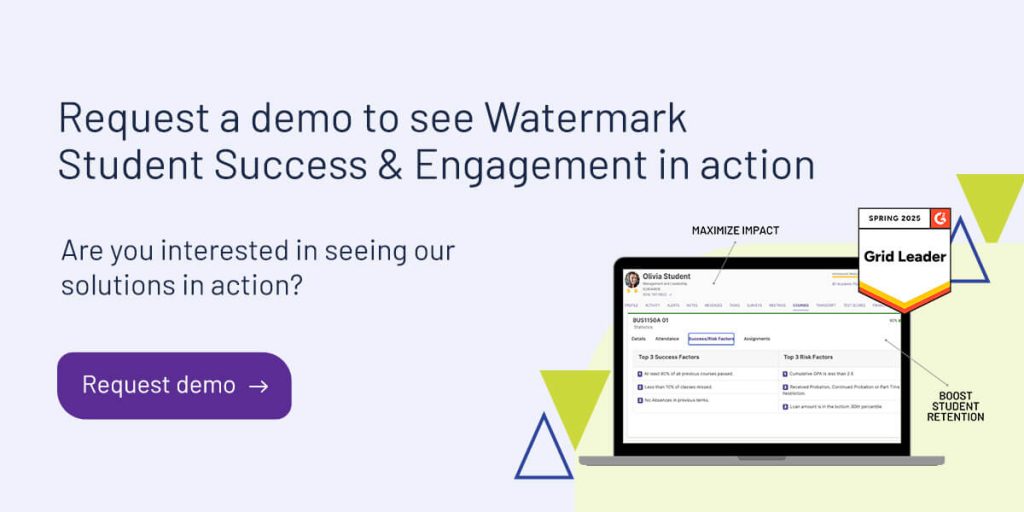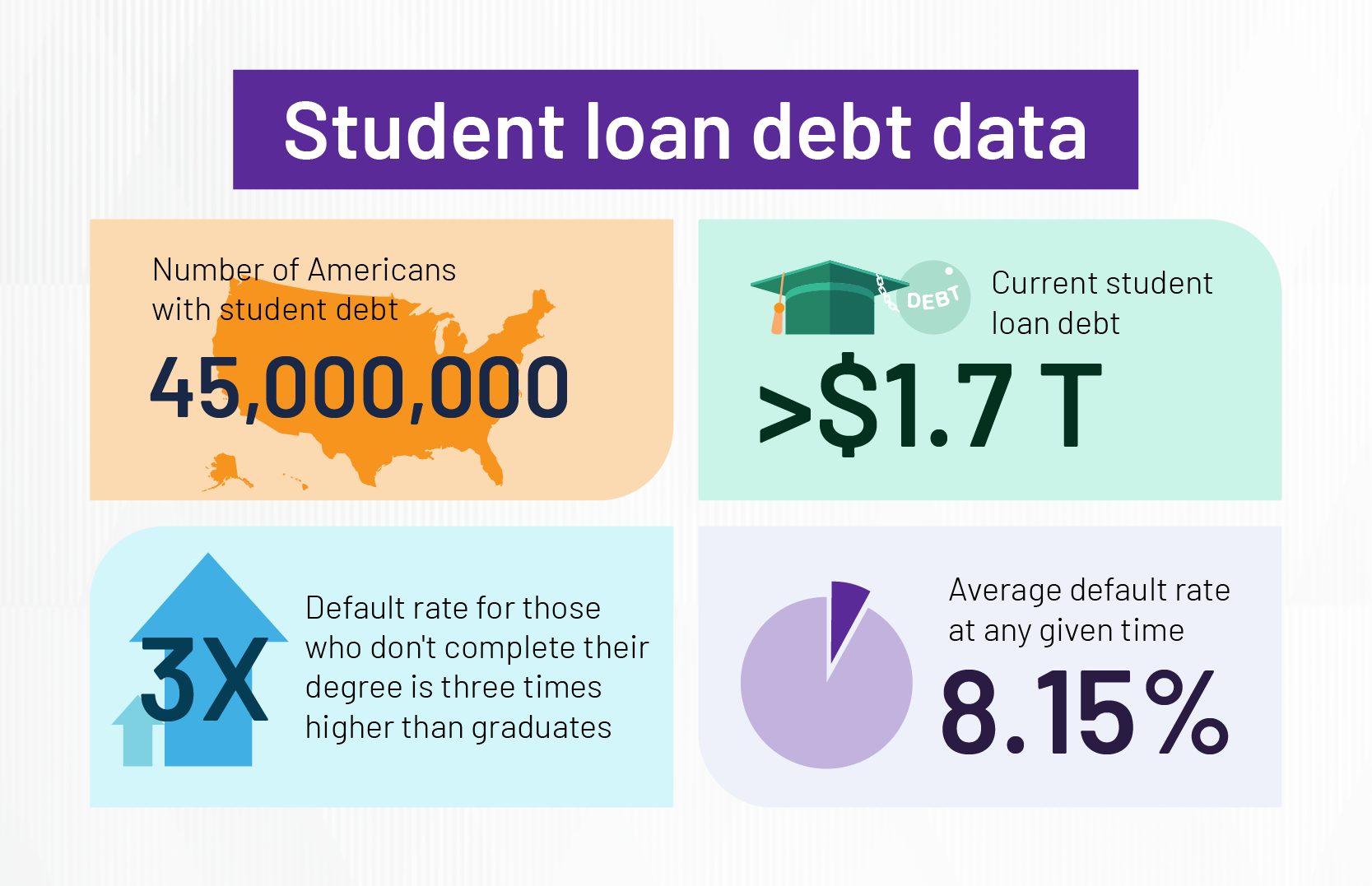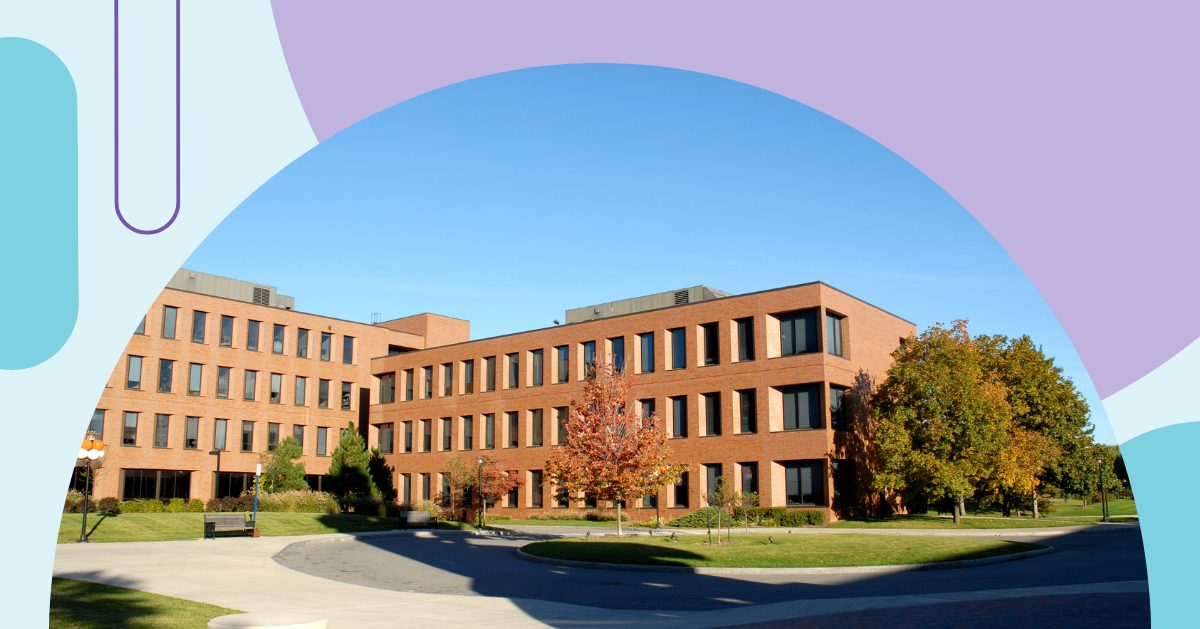
Summary: Summer melt can have consequences such as reduced funding and reputational impact. Increasing matriculation rates through direct student outreach campaigns can help institutions retain more students.
Summer melt is a serious issue for higher education institutions. It can create a domino effect throughout your organization, impacting everything from funding eligibility to resource planning. Understanding the primary causes and how to mitigate summer melt will help your college or university harness stronger relationships with incoming first-year students and ultimately benefit your institution as a whole.
Learn how to prevent summer melt in higher ed and adequately support incoming first-year students with this guide.
What is summer melt?
Summer melt refers to a phenomenon in higher education when recent high school graduates are accepted into a college or university program but do not follow through on enrollment. In many cases, these students intend to matriculate, but various factors deter them from completing the process.
Tracking and addressing summer melt rates are essential for higher education institutions. Losing these prospective students can have serious repercussions for your college or university.
What causes summer melt?
To effectively reduce and prevent summer melt, your institution needs to understand its root causes. There are various reasons why prospective students do not complete enrollment, and your institution will benefit from exploring each more closely. Explore some of the primary causes of summer melt below:
1. Struggles with financial planning
One of the leading drivers of summer melt is the complicated financial planning process involved in college or university matriculation. Many students, especially those from low-income backgrounds, face serious monetary barriers that make it difficult to complete enrollment and start college in the fall following their high school graduation.
Budgeting for school can also quickly become complicated for individuals embarking on their higher education journeys. Understanding the costs of everything, including housing, tuition, textbooks, and transportation, and effectively planning to cover these costs on time can be a massive barrier for incoming students.
Navigating financial aid and finding a package that suits their needs can be overwhelming for prospective learners.

2. Lacking adequate support
Another common reason recent high school graduates accepted into your institution do not enroll is that they lack adequate support to complete the process.
College is a challenging and exciting adventure for many students. However, those with a solid foundation generally have an easier time overcoming financial barriers, meeting important deadlines, and adequately preparing for a successful semester ahead.
Those who do not have a strong foundation with friends, family, and mentors can quickly become discouraged. Without proper guidance and encouragement from a solid support system, recent graduates may have greater challenges navigating higher education and ultimately decide against enrollment.
3. Logical issues and complications
Summer melt is also often caused by logistical complications that prevent recent high school graduates from completing the matriculation process.
Your prospective students may have to overcome many logistical hurdles, including:
- Making accommodations to attend first-year orientation
- Ensuring they have a reliable internet connection to complete enrollment tasks
- Signing up, paying for, and completing placement testing
- Sorting out housing arrangements and costs
- Registering for the first semester’s courses
- Determining transportation to campus and classes
The administrative work it takes to complete registration successfully and prepare for the semester ahead can be a major hindrance for incoming students, causing them to forgo enrollment altogether.
How summer melt can affect your institution
Summer melt in college or university enrollment can have negative implications for an institution and its students. Explore the key impacts below:
Reduced enrollment
When recent high school graduates apply to and get accepted into your higher education institution but fail to matriculate, your enrollment numbers decrease, creating a ripple effect throughout your college or university.
Many schools accept a finite number of new students each semester, so summer melt can impact the available enrollment spots for other students. This results in missed opportunities for other prospective students and smaller class sizes.
Lower enrollment can affect multiple facets of your institution, including:
- Funding eligibility
- Graduation and retention rates
- Student experiences
Addressing summer melt is essential for improving enrollment rates to drive institutional stability and success.
Financial implications
Summer melt can also have serious financial implications for your higher education institution. In addition to losing the potential tuition revenue from students who do not matriculate, your college or university may also experience financial instability caused by inadequate funding.
A summer melt rate as low as 8 percent to 10 percent can result in losses for your institution. These losses translate to complications in your school’s budget planning and ability to support various programs and services. Taking steps to mitigate this issue is essential for maintaining financial health and sustainability for your institution.

Resource allocation and planning
Another way summer melt affects your higher education institution is by impacting resource allocation. When students who intend to enroll in your college or university fail to matriculate, it can create disruption and inefficiencies in your budgeting, funding, and planning.
The following are some of the key parts of your institution’s resource allocation that summer melt can influence:
- Faculty-to-student ratios
- Class sizes
- Course demand and availability
- Support services
Minimizing summer melt can help your institution achieve greater stability and plan ahead with more accuracy. Schools dealing with especially high melt rates may need to implement contingency plans to prepare for the effects of tuition revenue losses.
Inclusivity and diversity
Summer melt can also influence the composition of your higher education institution’s student body. Students who come from lower-income backgrounds or are first-generation college students may face additional barriers, making enrollment too challenging to complete. This can potentially reduce the representation and diversity of the student population at your college or university.
Providing adequate support for underrepresented and underprivileged high school graduates can help your institution foster a community across campus that is rich in perspectives, backgrounds, and experiences.
Reputational impact
Your college or university’s reputation among prospective students, parents, and stakeholders matters. Some individuals may interpret summer melt rates as an indication of whether or not your institution provides new students with the kind of support and direction they need to succeed. Others may look at this metric as a reflection of your educational programs, their quality, and inclusivity.
A positive reputation is key to attracting top teaching talent and eager new students. High student retention rates, from the enrollment stage to graduation day, are important for building the strongest institution and community possible.
How to prevent summer melt this year
Higher education institutions can benefit from taking a proactive and strategic approach to guiding and assisting accepted students through the enrollment process to foster greater retention.
Explore the following tips and tricks for preventing summer melt below:
1. Share a clear, comprehensive summer checklist
One way to provide incoming students with the support and guidance they need to successfully matriculate is to give them a comprehensive checklist of the activities they must complete over the summer to prepare for the first week of classes. Ensure this checklist is clear and easy to understand.
First-year college students are inundated with tons of information in preparation for their initial semester. Help them combat information overload by keeping their tasks in an organized checklist that simplifies the process as much as possible. This list will help your college or university’s freshmen navigate this new time with more grace and less stress.
Consider including specific due dates for each checklist item so they understand what tasks to prioritize and can plan ahead. If you are sharing a virtual list, you can include hyperlinks to the web pages incoming students need to use to complete their enrollment responsibilities. Also, ensure you provide them with the necessary contact information so they can ask questions and get the guidance they need.
2. Prioritize communication through the summer
Your higher education institution can combat summer melt by prioritizing consistent communication with prospective students throughout the enrollment period. In addition to providing them with a checklist of what they must complete before coming to campus in the fall, ensure you are regularly sharing updates to remain in focus.
Use personalization to elevate your messages and boost engagement. Including the recipient’s name at the beginning is a simple and effective way to show that your institution values them. While you do not want to overwhelm students with too much information, share the following with them throughout the summer months to inspire excitement and follow-through:
- Updates about registration, classes, housing, or campus
- Instructions and helpful enrollment resources
- Contact information and where to go with questions or issues
If an accepted student is on the fence about attending your university or college, and you do not regularly reach out to them during this period, they will be more likely to walk away.
3. Share timely reminders
The summer before a student’s first year at a higher education institution can be exciting but hectic. Between navigating financial aid, sorting dorm room logistics, and completing harm-reduction courses, first-year students have a lot on their plates. Those who feel ill-equipped to manage all these moving parts may not complete the enrollment process.
By sharing timely reminders with your incoming students, you can help them stay organized and punctual so they finish their paperwork and enrollment tasks on schedule. Highlight upcoming due dates and events to stay top of mind and increase the likelihood that these individuals follow through with matriculation.
Sharing quick reminder emails or text messages can help your higher education support its incoming freshman class and set them up for a successful start to their first semester.
4. Create a summer countdown campaign
Building excitement is an important part of keeping students engaged over summer vacation. While sharing timely reminders is helpful for logistics, combining these reminders with an inspiring countdown campaign can showcase the exciting elements of life at higher education institutions. You can create your countdown campaign using email newsletters, texts, and social media to share:
- Images and videos showcasing the campus facilities and student organizations
- Interactive quizzes and polls related to certain academic programs
- Videos featuring current students sharing their experiences and advice
- Virtual tours of the campus
Countdown campaigns can combine useful enrollment information with content about the highlights of campus life, student activities, and academic opportunities. Using current students to convey motivational messages and tips, such as what to pack, addressing homesickness, and other experiences relevant to your institution, can help ease anxiety and make students feel understood and supported. Be sure to tailor your campaign messages based on student interests, academic programs, or demographics for optimal engagement.
5. Implement a mentorship program
University or college enrollment can be complicated and involved, especially for first-generation students who may not have the guidance and support they need. One way to help these individuals navigate the confusion is to establish a mentorship program for incoming freshmen. This program can feature current students who are well-adjusted to college life and can provide firsthand experience about going through matriculation.
Mentors can function as advocates and counselors for new students, assisting them through each step of the enrollment process. This type of program can be highly effective in keeping prospective freshmen engaged and up to date throughout the summer months. If an individual misses a due date or stops responding to messages, your mentors can reach out one-on-one to see how they can help them get back on track.

6. Share resources to connect with other students
Community is the foundation of higher education. It is important for new students to link with their peers and foster meaningful relationships during this time. These connections are integral to student resilience, as they create a network of support and collaboration that can benefit a student from enrollment to graduation. Peer friendships and partnerships can make or break an individual’s willingness to overcome hurdles in their educational journey, and many of these relationships begin freshman year.
Consider implementing a program, such as a peer support network, to help new students connect with their classmates, ask important questions, and share their experiences. Having other students to lean on can elevate an individual’s academic experience and encourage them to keep moving forward with their education.
7. Make orientation more accessible
Freshman orientation is an important time for new students as they gain their bearings and become more familiar with how your institution works. Students often meet with other incoming students, department faculty, and advisors during these meetups. They help new students understand the logistics on campus and what your college or university expects of them. However, missing orientation is a key reason why many individuals do not matriculate.
To combat this issue, your institution should make orientation more accessible and inclusive. Consider hosting multiple orientation dates or providing a virtual option to accommodate more individuals and increase the chances they will participate. Be sure to share support services and use orientation as a tool to reinvigorate students who are unsure whether or not they want to enroll.
8. Build parent engagement
Engaging parents can be an effective way to prevent summer melt. Many parents are unaware of this enrollment challenge, so begin by educating them about what summer melt is and its impact on students and institutions.
Then, provide parents with dedicated orientation sessions, regular email newsletters, a comprehensive parent portal, and financial guidance workshops to equip them with the knowledge and resources they need. Specifically address key concerns like affordability, academic support, student homesickness, and cost-saving options like AP credits. There is increasing evidence that parental engagement is important for student success. The more informed parents are during the summer before college, the better they can support their child’s enrollment process.
9. Assign financial aid counselors
A 2024 study shows that summer melt is most common amongst low-income high school students who would be the first in their families to attend college. School absenteeism, FAFSA noncompletion, and doubts about higher education have been identified as additional key risk factors. Higher education institutions must provide support to these vulnerable students to reduce the summer melt rate and increase educational attainment among low-income students. One effective strategy is to assign dedicated financial aid counselors.
These counselors can provide personalized support, address concerns about affordability, and help students navigate the complex financial aid process. If you designate time with financial aid counselors for incoming students to have their questions answered, they won’t need to compete with the whole student population. If counselors offer guidance and build trust with students and families, it can reduce stress and increase the likelihood that high-risk students matriculate successfully.
10. Leverage technology to identify risk factors early
Your higher education institution should take a proactive approach to mitigating summer melt. Waiting until August to intervene and reach out to prospective students will not help your college or university effectively redirect attitudes or behaviors. Ensure your intervention strategies allow for plenty of time to help students get back on the wagon and complete the required documentation, activities, and tasks they need to be active, enrolled students on the first day of classes.
Today’s technology makes it easier than ever to monitor student activity and identify primary risk factors for not matriculating, such as missing important due dates or failing to respond to a freshman survey. Your institution can leverage these solutions to flag individuals who are likely to forgo enrollment, giving you plenty of time to contact the student, identify their unique hurdles, and offer guidance for successfully completing enrollment and becoming a proud member of your higher education community.
Request a demo to see Watermark Student Success & Engagement in action
If your higher education institution is looking to leverage student data and insights to combat summer melt effectively, turn to Watermark’s Educational Impact Suite.
With Watermark Student Success & Engagement, your college or university can monitor risk factors for skipping enrollment. Our tools help your institutions prioritize proactive intervention to ensure students get the support they need to follow through on their academic journey and thrive after graduation.
Are you interested in seeing our solutions in action? Request a demo of the higher education software from Watermark to get started today!
















































































































































































































































































































































































































